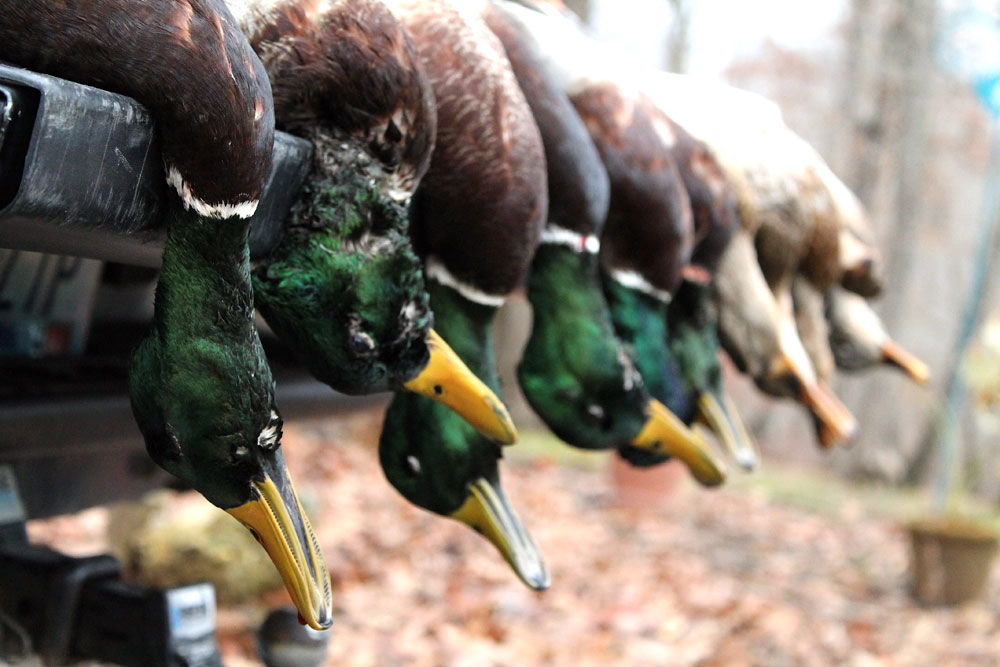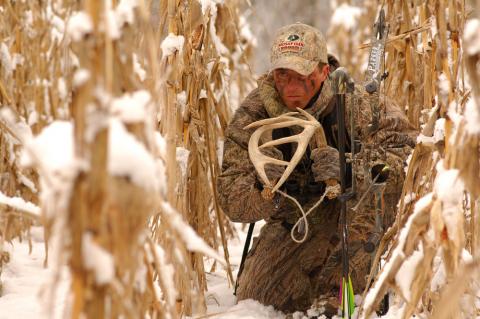Richie McKnight Begins His Waterfowl Hunting in Canada Each Year
provided by John E. Phillips
Richie McKnight, from Dawson Springs, Kentucky, is a travelling duck hunter and has been a Mossy Oak Pro since 2005. You can see his adventures on Traffic Hunters TV on YouTube and go to his Facebook page. “I got really interested in duck hunting when I was fairly young,” McKnight explains. “And, duck hunting just stuck with me like white on rice. I don’t think we killed any ducks when I was young, however, the experience of watching older hunters call and pull the ducks out of the sky totally fascinated me. So, I’ve been duck hunting ever since.”

I usually start off each waterfowl season hunting in Alberta, Canada, in October. Then I go to Illinois and next Kentucky, Arkansas and Tennessee. I follow the duck migration. I start off in a little town called McLennan, Alberta, and I hunt with Blue Sky Outfitting. I’ve been going up there for the last 20 years, and October seems to be the best month to hunt there.
Also, I like to go to Canada in October because it’s long before our duck season starts in Tennessee and Kentucky. Every year the season seems to get a little later than it has been previously. We’ve found that the last part of September and October now seems to be when the waterfowl hunting is best in Alberta. This place is one I know of where you can hunt on dry pea fields and have those huge clouds of ducks swarm into your decoys.
I compare early season Canada duck hunting to timber hunting in Arkansas. The main duck we take in Canada is mallards. We’ll shoot into flocks of 100-plus mallards. When we’re hunting up there, we can fill our limit really quickly. Another reason I like to hunt Canada in the early season is we’re hunting numerous juvenile ducks. Canada is the breeding site for most of the North American waterfowl. And, these juvenile birds haven’t seen decoys, heard duck calls or seen duck hunters, so they work well to our calls and our decoys. We’ve found they really like the spinning-wing decoys. Most of these younger birds haven’t seen a spinning-wing decoy, but by the time they reach Mississippi and Texas, they probably can tell you the name of the call maker who’s produced the spinning-wing decoy they’re watching. In one day, we’ll see as few as 5000 ducks to as many as 20,000 ducks - depending on how big the pea fields we’re hunting are.
We once hunted in laydown blinds, but now we’ve gotten too old and too fat to fit in them. So, we’re using pop-up blinds now. I sit on a 5-gallon bucket in a pop-up blind, and our decoy set usually contains 25 or 30 full-bodied Canada goose decoys, one or two dozen full-bodied duck decoys and three or four spinning-wing decoys. Besides ducks, we also take Canada geese. With 10 people shooting, we’ll usually harvest 40 to 50 Canada geese and 80 to 100 ducks in a day’s hunting in Alberta.
Lately I’ve been asked, “How much of a problem is taking a gun into Canada?” I only need about two minutes to get through customs with my shotgun that I’ve carried on the airplane to Canada. Everyone needs to go to Canada to hunt ducks once in his or her lifetime. You can check the gun regulations online.




























